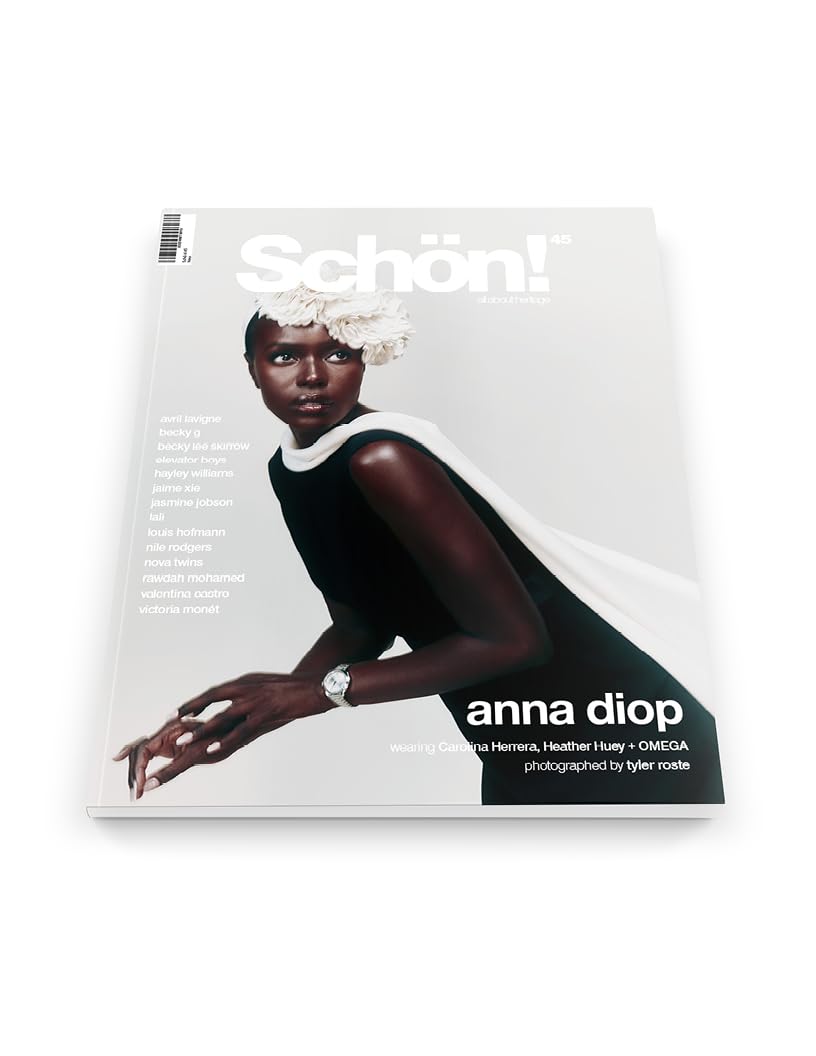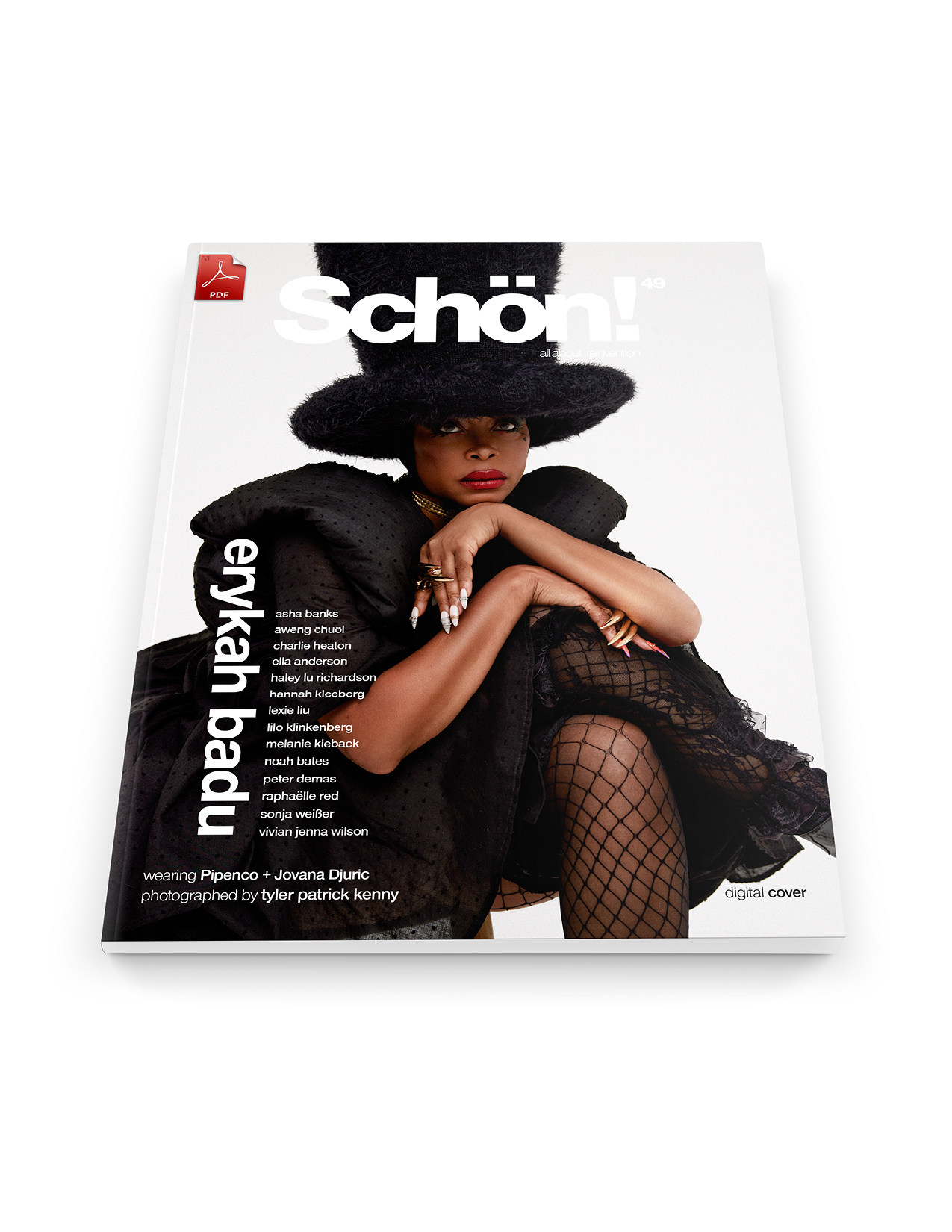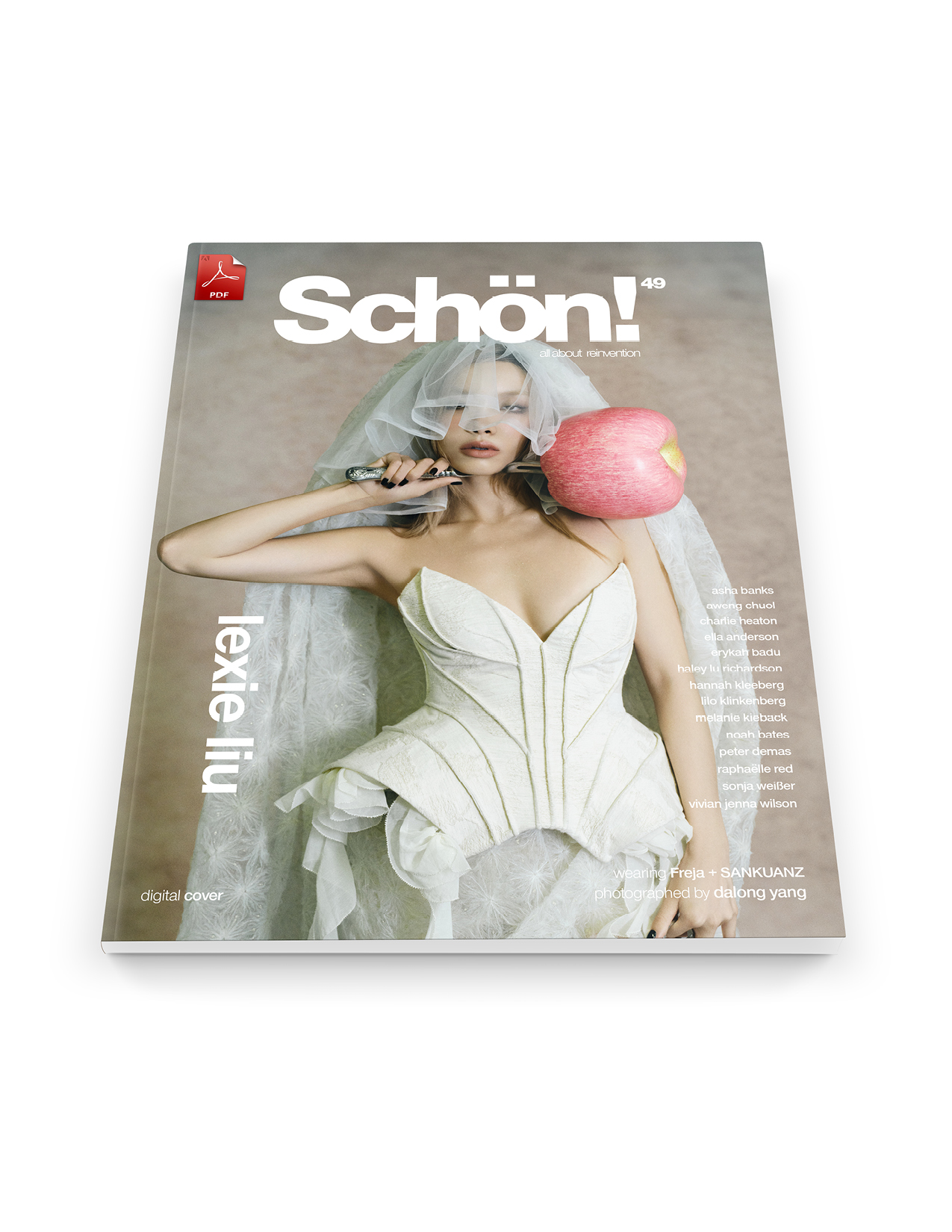Often times, fashion is the best way to begin a journey of inner reflection and self-discovery. And that’s precisely what designer Manuel Capozzi does with his collection — titled “The Empty Screen of Life.” Through fashion, Capozzi explores social concepts, questioning the origins of life and his relationship to motherhood with textiles and technology. Freshly graduated from the Nuova Accademia Di Belle Arti in Milan, Capozzi’s creative vision is a beautiful combination of art and fashion with social and psychological commentary – all of it in a colourful and thoughtful manner.
Capozzi’s designs are extremely personal. The designer even incorporates pictures of members of his own family on his pieces — used to encourage all of us to reflect on our lives and surroundings. Here, Schön! speaks to the clever designer exclusively to discuss the strength such intimate retrospection requires, the combination of different languages, and the influence of artist Federico Clapis in his work.
What made you want to become a designer?
There is no moment or event in which I realised I wanted to be a designer, somehow I always knew. Since I was a child, the best way to express my creativity was through fashion. It always was a natural process. It’s like I always had a filter on my eyes that turns everything around me into clothes, this process makes me feel complete and at ease. Sometimes I just feel only like a link between this inner filter and the outside world. This is why I decided to make it a profession, hoping to occupy my “right place in the world” — giving joy, quality and value to the world of fashion and the whole world.
Your collection is a journey – from motherhood to inner reflection. The dresses even features members of your own family. Why did you choose fashion to express such an intimate introspection?
As in art, even in fashion, I believe there are no subjects so intimate that they cannot be used, especially when it comes to issues that start from the personal and come to involve a universal way. Fashion is a strong language that nobody can avoid, an almost mandatory second skin, so why not load it with intimate and real messages?
The dress which features the five generations of my family is inspired by my history and my roots, but it’s dedicated to everyone. Through my nephew, my brother, my mother, my grandfather, and my great-grandmother, the dress covers a range of ages ranging from four to 100 years of age. Everyone can reflect on it and merge themselves in their origins, whether they know them or not. Everyone should and could wear a reflection on time, a reflection on social and family roles that change constantly, until the end.
Federico Clapis has been a great influence on this project. What is your relationship to his art?
The collection is almost entirely a tribute to the artist Federico Clapis. He is an artist that I have been following for a long time and that has always aroused a strong interest in me, I knew that sooner or later it would be in my references and inspirations. I have always been fascinated by his great tenacity and resourcefulness. I appreciate the themes, messages and social complaints of his art because they reflect my thoughts and my values. I also admire the ways in which he expresses himself. His works — and consequently his aesthetics — are direct, immediate and clean, just like mine tries to be. In the collection process, I studied and analysed every one of his works, I have extracted my favourite concepts and build a new path with a personal interpretation. At this point, turning his works into fashion was a natural and heartfelt process.
What is the most important thing you want people to grasp while looking at this series?
“The Empty Screen of Life” is the collection’s title and the first invitation to people who come across the series is to reflect on the importance of their own “screen” of life: refer to the screen of your smartphone — certainly full, alive and active — and compare it with the “bigger” one of life. Which of the two screens has the right importance and the right amount of time? This concept lives figuratively, within the collection, in the “Belly suit + iChild t-shirt “ outfit, where there is a fetus with a smartphone inside a pregnant woman, an artificial concept within another very natural. The screen of the phone inside the screen of life, which one do you prefer?
Do you believe the photographs to capture something that a runway show would not have done?
The garments are directly inspired by some sculptures and I wanted their aesthetics to retain a sculptural, smooth and intact appearance. This aspect is emphasised in the photographs: the series is reminiscent of an art catalogue and the atmosphere is static, dreamlike — as if we were in a silent and slow museum where only the structures and messages of each head. Everything was also favoured by some elements such as the pedestal in which the model is inserted, a reference to the original work by Federico Clapis.
As for the fashion show, the image is different, the garments lose their dreamlike appearance and gain dynamism. Thus, the concept of time and experience is part of a body in movement — also recurrent in the key concepts of the collection. While in photography time is still, stable, in the show the dress gets dirty and comes to life. These are two different habitats but of equal importance because together they give completeness to the project.
This show was a part of the Final BA Show at NABA (Nuova Accademia Di Belle Arti). How did your education at this institution influence your art and your work?
The final event was the right experience to complete the course in the best way. A rich and rewarding journey. I remember that before enrolling, one of the premises from the leaders was that the courses would have allowed a unique and personal formation for each one, to date I can confirm it. In the training course, there were not particular influences but a unique flowering process. In addition to being matured at a technical level, touching on many sectors of the fashion world, I have always expressed myself freely based on my choices, which has allowed me to better understand and develop my personal vision and to improve the skills in my field with my artistic affinities.
The sterile environment and the statuary aspect of the subjects recall an Art catalogue. Is it important for you to merge different means of artistic expression?
Different languages and worlds combination are essential for me. In a larger-scale speech, I think that today, given the difficulties we face in the environmental and social fields, more forces union represents the future, conversion of the best energies into one could be salvific. This ideal is reflected in all aspects and in my current works represents the union of the artistic and fashion world. These are two strong energies that converge explicitly and coexist in harmony forming a new unique and lasting language. Also for this reason, as the photos confirm, I have chosen not to suffocate the artistic aspect coming from the inspirations but to enhance it in a large percentage, demonstrating how the cohesion and generosity of different worlds can lead to new results.
What were the biggest difficulties for this project?
Without a doubt, the greatest difficulty of the project was the package of the garments. Each garment has been entirely designed, cut and packaged by me. Many pieces require experimental modelling and present many difficulties that clashed with my means and my experience that before that time had never faced such a challenge. Despite this, I carried out the project in the best way. I reached my goal always believing and almost astonishing at myself. Not commission the manufacture to external personnel was a choice guided by the desire to mature and gain experience also in the field of packaging, ensuring that the silhouettes and the complex turned out exactly as imagined.
The most complex garment to be made was “5 belly dress”, composed of five pregnant and pierced bellies – the dress to wear overlapped with “5 generation long t-shirt”, which includes images of my family members. It was the emotionally strongest suit in all aspects, it was like a challenge between us culminating in a success that increased the symbolic value, the strength and energy and the affection between me and the dress.
What are you now looking forward to, artistically and personally?
I’m sure I want to work as a designer and try to attract what I really want every day. I live in the “here and now”, in the joy of create, acting and sharing. I calculate my future moves without too much fury, I think that a dream or goal is not realised in the long term but now, moment by moment, day after day, goal after goal. I feel comfortable on the road I took and every day ends with the best I can do to reach my goals: this is the greatest fortune.
Curious about where time will take me, I rock myself with the quote that best represents me: “so much is created, nothing is destroyed, everything turns into clothes”.

5 generation long t-shirt. Manuel Capozzi
opposite
5 generation long t-shirt + 5 belly dress. Manuel Capozzi
You can follow Manuel Capozzi and his work on his Instagram.
This Schön! online exclusive has been produced by
designs. Manuel Capozzi
photography. Giuseppe Morello
fashion. Eva Beppi
model. Alina P. + Paula Marie Loopere
make up. Gaia Dellaquila
interview. Hugo Scheubel






































































































